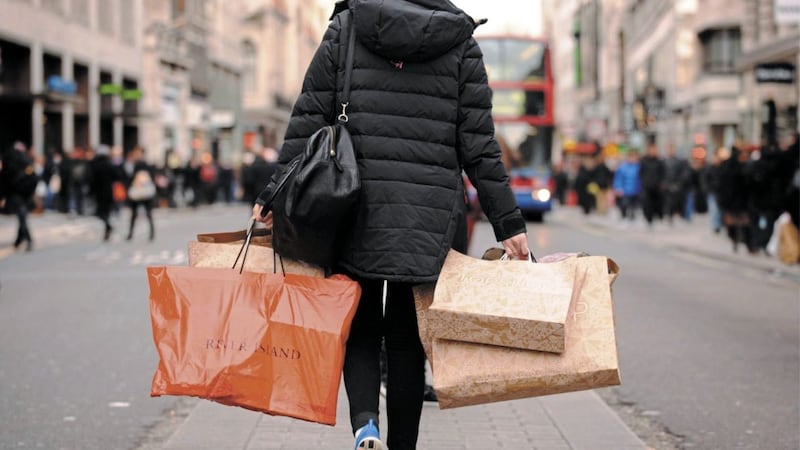RETAIL sales rose in January and beat market expectations as shoppers took advantage of discounts following a disappointing Christmas.
Sales increased by 1 per cent last month following a 0.7 per cent decline in December, according to the Office for National Statistics (ONS).
This beat the consensus forecast of just 0.2 per cent growth.
On an annual basis, retail sales grew 4.2 per cent, which was the highest rate since December 2016.
In the three months to January, the quantity bought increased by 0.7 per cent.
Sales at clothing and footwear retailers grew 5.5 per cent year-on-year while prices fell 0.9 per cent as shoppers took advantage of the January sales.
Food sales returned to the strong growth experienced in the summer months at 3.2 per cent following a marked slowdown last year.
However, online sales slipped to 18.8 per cent from 19.8 per cent in December, due to a decline in sales from non-food retailers.
Philipp Gutzwiller, head of retail at Lloyds Bank Commercial Banking, said: "Despite all the bad news we heard about the high street in January, shoppers returned to spending after a disappointing Christmas."
He noted, however, that there is a "big difference between tempting shoppers with bargains and persuading them to keep buying once January's discounts and new year's resolution purchases are over", while for retailers there is also a difference between a discounted sale and one at full margin.
"But whatever the margin, these figures show that shops were able to persuade their customers to spend more in January than they did in December, which is undoubtedly a positive.
"Without any sign that the current challenges are about to ease, they now need to continue that creativity and all-channel focus to tempt shoppers to keep spending until the current headwinds die down."
Howard Archer, chief economic adviser at EY ITEM Club, said despite the spike in retail sales the Bank of England is still unlikely to hike interest rates before November and that there is a "genuine chance" that it will sit tight on rates through 2019.
"The economy still seems to be struggling overall in the first quarter after a sharp slowdown in the fourth quarter of 2018 amid heightened Brexit uncertainties and slower global growth.
"Even if the UK ultimately leaves the EU with a 'deal' and that there is some pick-up in UK growth thereafter, the MPC (the central bank's Monetary Policy Committee) will likely wait for some time before edging up interest rates from 0.75 per cent to 1 per cent as it will want to see sustained evidence that the UK economy is improving," he said.
Manu Tyagi, associate partner at Infosys Consulting, said the figures highlight that the UK high street "is far from dead" and not only are retailers beginning to see the light at the end of the tunnel, but they’re taking important steps to ensure they beat the high street blues.
He said: “Online sales as a total of all retailing decreased in January from December, so evidently the line between online and offline retail is becoming increasingly blurred.
“Ultimately, both online and in-store sales are important revenue streams for retailers, who focus on an omni-channel approach which is reaping the rewards.
“Frankly, UK retail is in the middle of a reinvention whereby the fittest, who are adapting to new consumer preferences, are the ones surviving and thriving. They know consumers will spend wherever they get the best combination of choice, convenience, price, and experience – and that’s exactly what they’re giving them.”







